Architectural Marvels of the Islamic Golden Age: Discover Spain to Iran’s Heritage Gems
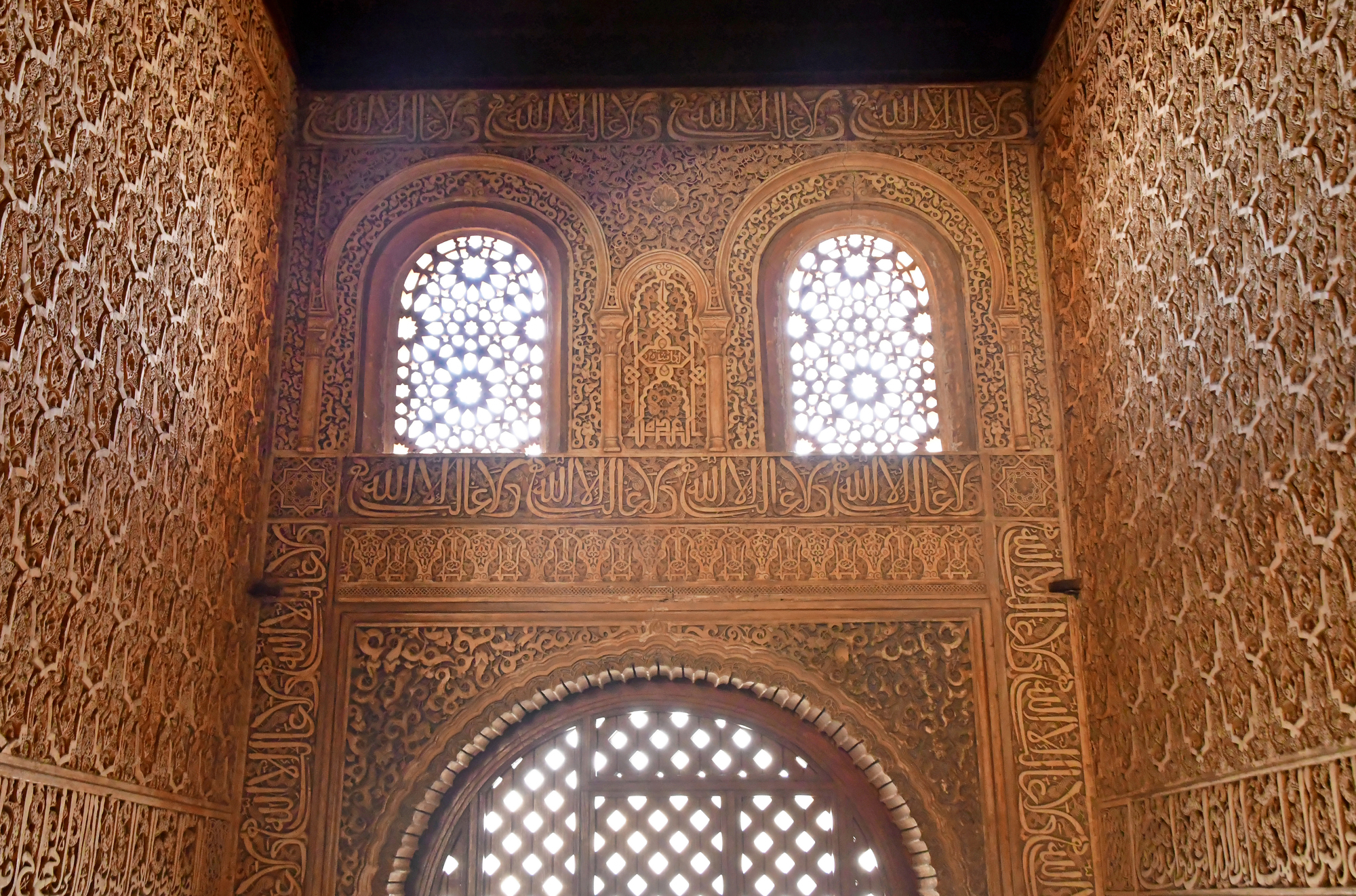
Updated On: March 22, 2024 by Fatma Mohamed
As we journey through the history of architecture during the Islamic Golden Age, spanning from Spain to Iran, we uncover a period marked by incredible innovation and artistic achievement. This era witnessed the construction of some of the world’s most stunning architectural wonders, structures that have stood the test of time and continue to captivate with their intricate designs and advanced engineering techniques. Through the lens of architectural marvels such as the palaces of Spain and the mosques of Iran, we can explore the rich cultural heritage that was fostered under Islamic rule—a heritage that still resonates in the design of modern buildings today.
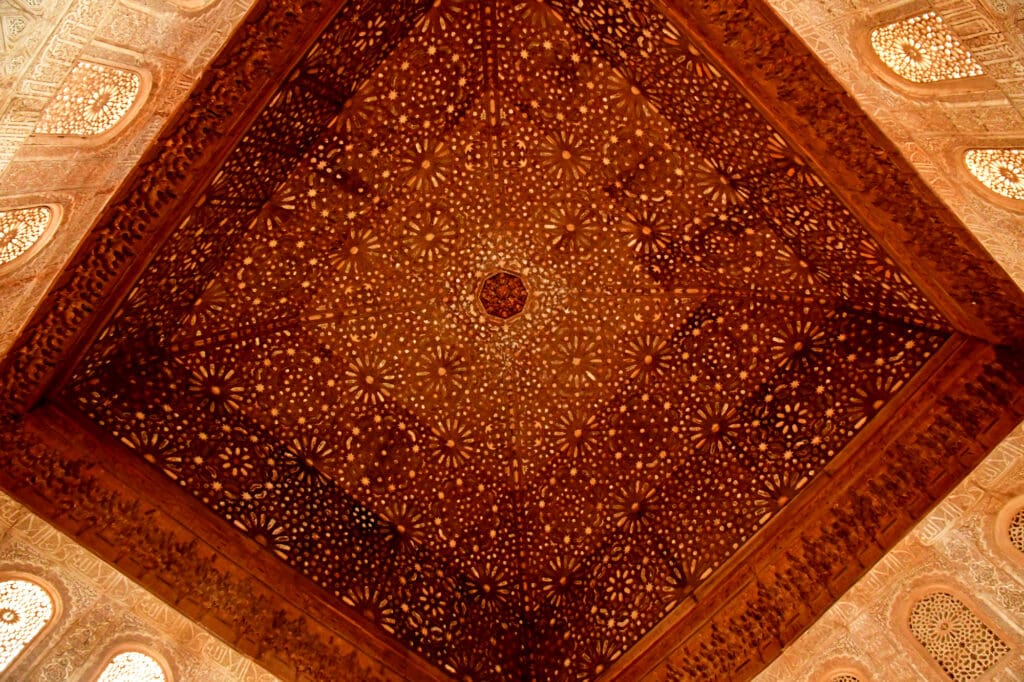
The architectural feats of the Islamic Golden Age reflect the synthesis of science, art, and spirituality. Master builders and craftsmen pushed the boundaries of design, utilising materials like stone, glass, and ceramics to bring both functional and decorative elements to life within their constructions. Religion played a central role in influencing the layout and adornment of buildings while promoting a sense of community and shared cultural identity. The evolution of Islamic architecture over the centuries can be observed in these structures, documenting a narrative of societal values, technological progress, and artistic expression.
Historical Context of Islamic Architecture
Islamic architecture encompasses a wide span of both time and geography, rooted deeply in history, culture, and religion. The evolution of this architectural style has been significantly influenced by various Islamic empires and the spread of Islam, especially from the 7th century onwards.
Table of Contents
Rise of Islamic Art and Architecture
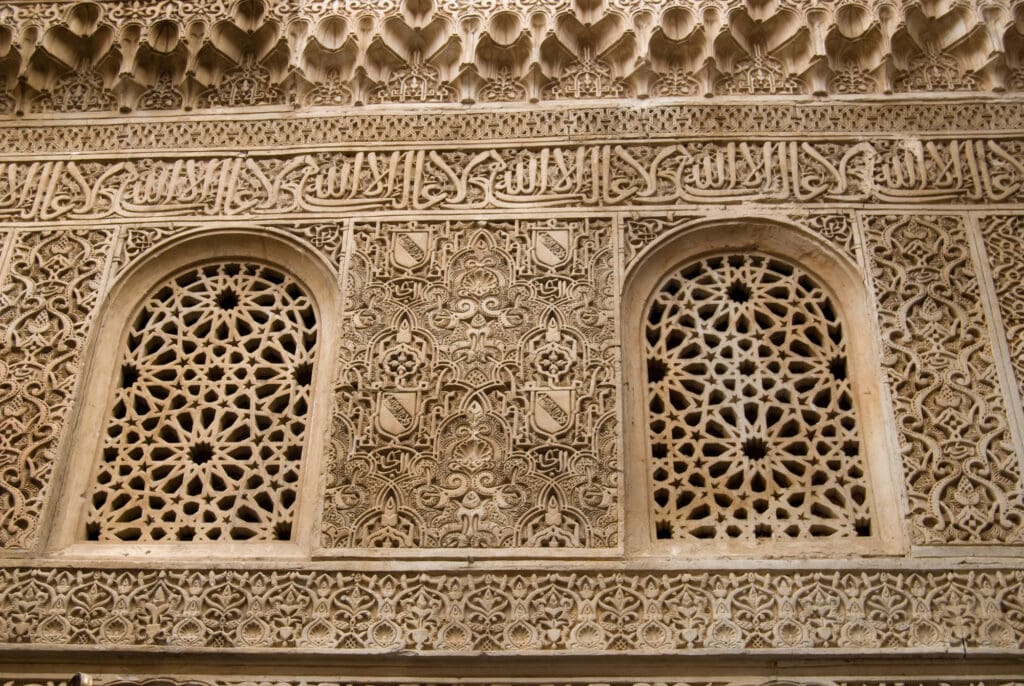
Islamic art and architecture burgeoned with the advent of Islam in the 7th century. We quickly observe the creation of structures synthesising local traditions and new Islamic motifs, a direct reflection of the societies and cultures where Islam became prevalent. Mosques, palaces, and forts are among the structures that received attention, showcasing both the religion’s practical considerations for spaces of worship and its cultural devotion to beauty and intricate design.
Influence of the Moors in Spain
In the Iberian Peninsula, the Moors—a group of Muslim people from North Africa—played a pivotal role in the introduction and propagation of Islamic art and architecture. The Moorish presence resulted in the region of Al-Andalus, now modern-day Spain, becoming a centre for Islamic culture. Their mastery of art is especially evident in Granada, where structures such as the Alhambra Palace stand as testaments to their legacy, blending Islamic design with local influences.
The Umayyad Caliphate and Its Legacy
The Umayyad Caliphate, at its peak, was a formidable Islamic empire that left an indelible mark on architectural history. Its rulers were patrons of Islamic art and played a key role in its spread throughout their territories. This period witnessed the creation of key religious and secular buildings that influenced subsequent Islamic architecture. Particularly, the Great Mosque of Damascus embodies their achievements, demonstrating a synthesis of various artistic influences under a single Islamic framework.
Defining Features of Islamic Architectural Design
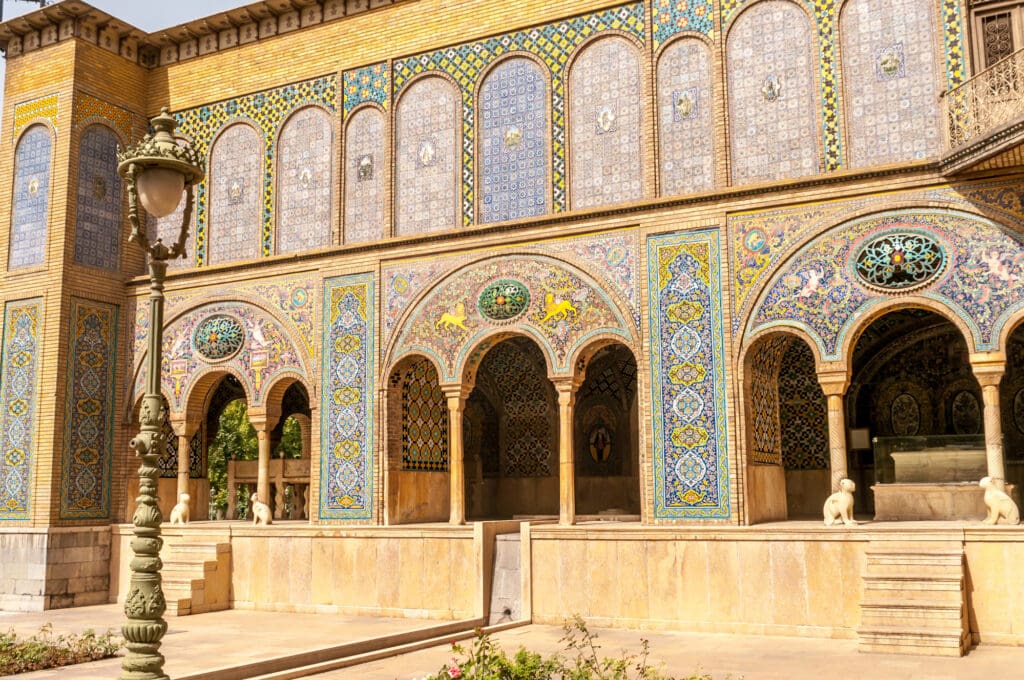
In this section, we explore the intricate details that set Islamic architectural design apart, focusing on its use of geometric patterns and key architectural elements.
Geometric Patterns and Ornamentation
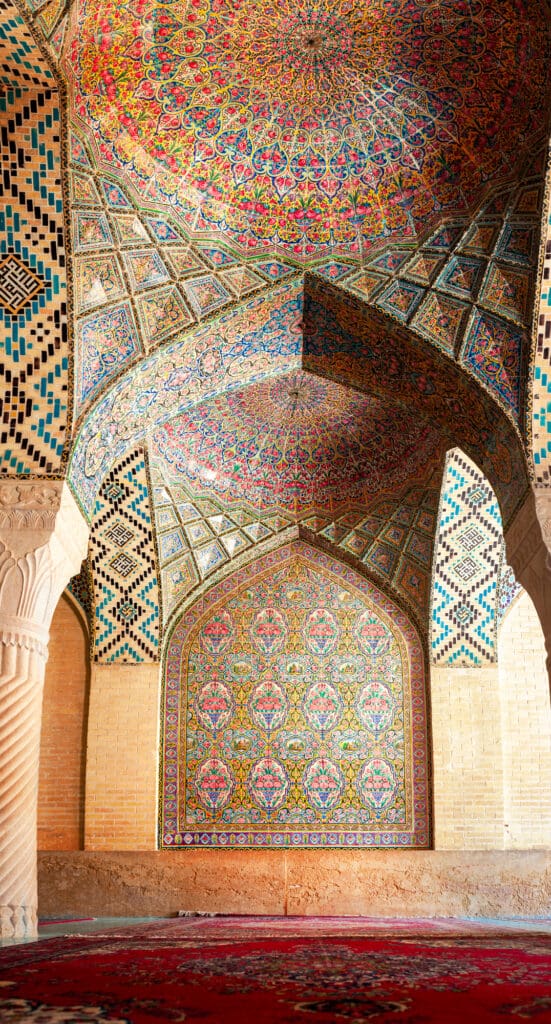
Islamic architecture is renowned for its incredible use of geometric patterns and ornamentation, creating endless variations that symbolise the infinite nature of Allah. These designs are not merely decorative; they are deeply rooted in the philosophical and scientific thinking of the Islamic Golden Age. Tiles often feature intricate geometric patterns, which might repeat in a wide array of forms, showcasing the remarkable precision and creativity of artisans from the period. The use of muqarnas—stalactite-like structures that appear in domes and arches—further exemplifies the complex beauty of Islamic design. These elements can be seen adorning various structures, from the Court of the Lions to the mosques of Isfahan.
Islamic Architectural Elements
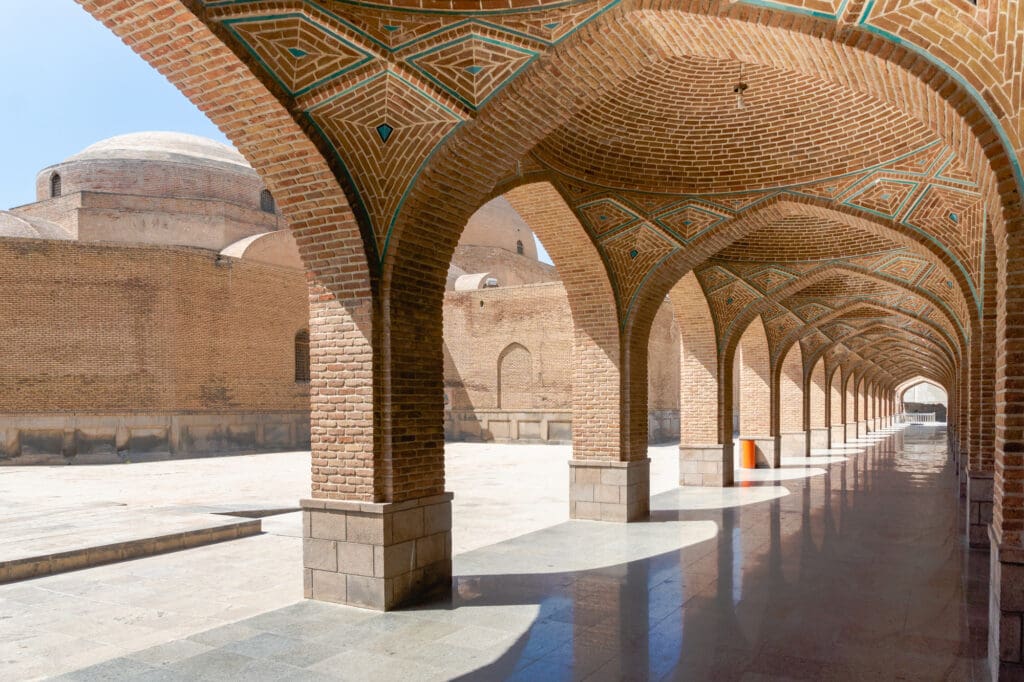
When it comes to Islamic architectural elements, several features are emblematic of the style. Mosques, for instance, often display distinctive courtyards that facilitate both community gatherings and individual contemplation. The mihrab, a niche in the wall indicating the direction of Mecca, is a focal point that aids worshippers in orienting their prayers. Moreover, the soaring minaret is not just a tower; it is a symbol of the faith, calling the faithful to prayer across the cities and towns. The curvature of horseshoe arches provides yet another hallmark of Islamic architecture, offering both aesthetic appeal and structural support. Islamic constructions have consistently embraced these elements to create spaces that are as functional as they are awe-inspiring.
Iconic Monuments and Their Architectural Marvels
We explore the splendour of Islamic architecture during the Golden Age by highlighting two iconic monuments. Their stunning features continue to captivate us with the legacy of masterful craftsmanship.
The Grandeur of the Alhambra
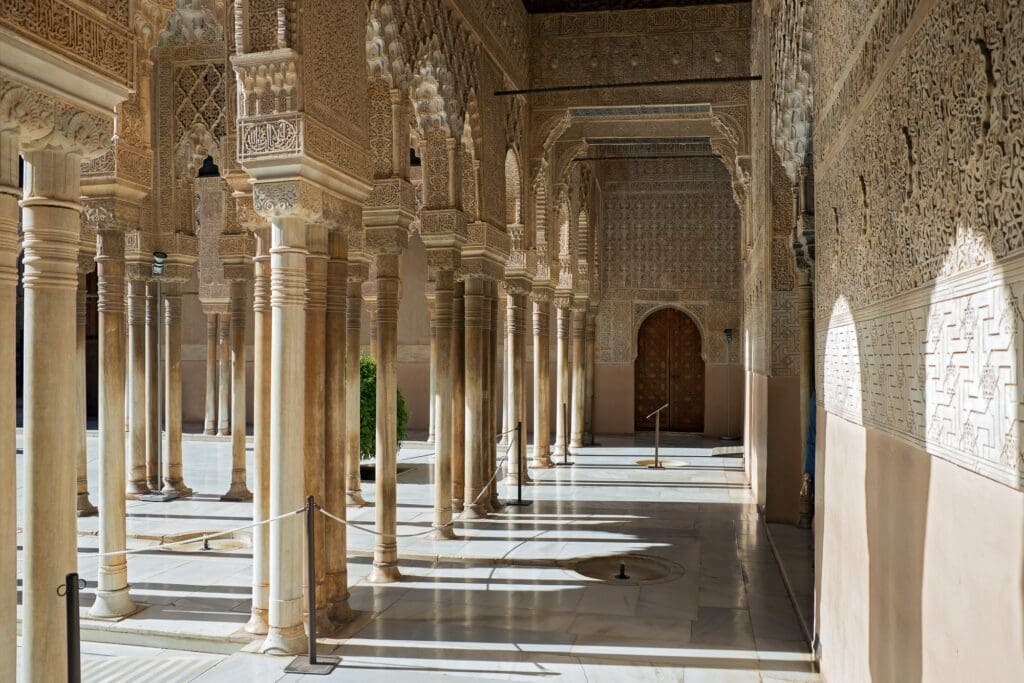
Nestled in the heart of Granada, Spain, the Alhambra stands as a pinnacle of Moorish art and the Nasrid dynasty’s architectural ingenuity. Within its walls, the Nasrid Palace fascinates with its detailed tile work, embodying the sophistication of Islamic geometric patterns. The Court of the Lions is a particular highlight, an emblem of architectural innovation and symbolic references. Recognised as a UNESCO World Heritage Site, the Alhambra’s palaces and gardens exemplify the grandeur and luxury of an era long past yet preserved in stone and tile.
Majestic Mosques and Their Elements
Islamic architecture’s grandeur continues in the form of majestic mosques, which are not only places of worship but also examples of extraordinary artistry and design. Mosques are typified by their soaring minarets, intricate tile work, and expansive courtyards. They often incorporate an array of decorative elements, such as calligraphy and Islamic geometric patterns, that are believed to reflect the infinite nature of the creator. This architecture not only serves a religious function but also signifies the cultural identity and technological prowess of Islamic civilisations.
The beauty and complexity of these monuments remind us of our shared cultural heritage and the universal value of preserving history.
Masters of Materials: Islamic Use of Stone, Glass, and Ceramics
In our journey exploring the architectural marvels of the Islamic Golden Age, we find an exceptional use of materials that defined the period’s aesthetic and structural accomplishments. The masterful use of stone, glass, and ceramics is evident through intricate tile work and impressive stone and glass constructions that continue to inspire today.
Craftsmanship in Tile and Ceramic
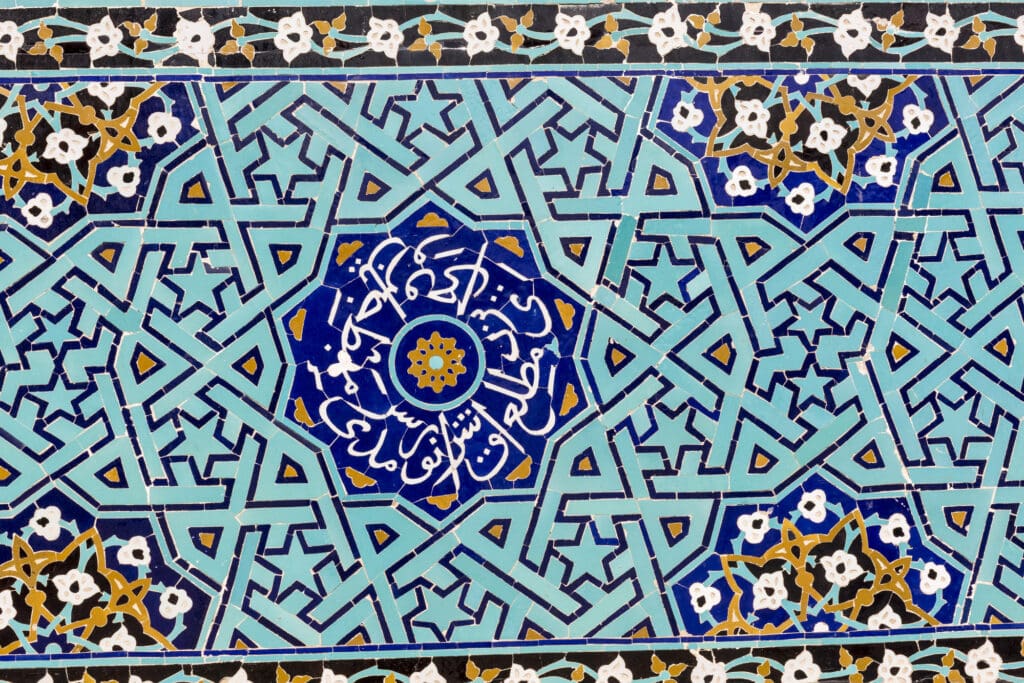
The Islamic world was renowned for its intricate tile and ceramic production, utilising complex techniques that often included calligraphy, geometric patterns, and arabesques. These ceramics were not only functional but also decorative, often covering the interiors and exteriors of buildings, adding to their beauty and grandeur. In the early Islamic period, potters adapted and refined their craft by incorporating influences from the surrounding regions, which resulted in distinct styles, such as the use of lusterware glazing that gave ceramics a metallic sheen.
For instance, in the Alhambra, we find tiles that illustrate the pinnacles of Islamic ceramic craftsmanship. The use of zellij, a traditional Moroccan tilework, created stunning mosaics, while Iznik ceramics from Ottoman Turkey vividly narrated stories from their rich cobalt blues and bright reds.
Stonemasonry and Glasswork in Islamic Buildings
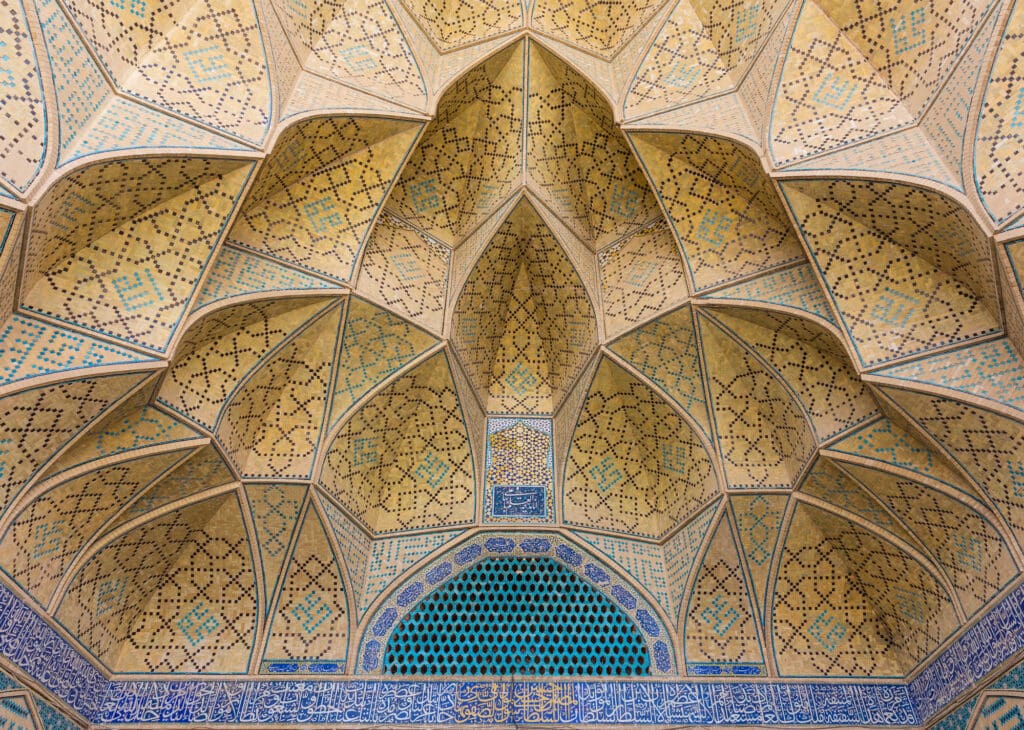
The stonemasonry of the Islamic era showcased unparalleled craftsmanship, especially in the construction of mosques and palaces. Buildings were often adorned with intricately carved stone, featuring Islamic calligraphy and detailed vegetal motifs. The masons’ proficiency is still visible today in the surviving monuments spanning from Spain to Iran.
Glasswork also played a vital role in Islamic architecture, most notably in the form of stained glass windows, which not only added to the edifice’s splendour but also held symbolic significance. Beautiful examples of stained glass can be seen in structures like the Nasir al-Mulk Mosque in Iran, where the morning light transforms the interior into a kaleidoscope of colours.
Through the use of stone, glass, and ceramics, Islamic architects and craftsmen left an indelible mark that continues to be celebrated for its innovation and beauty. Their legacy lives on in the timeless monuments that carry the story of a golden age of artistic and cultural flourish.
Architectural Innovations and Engineering Feats

The Islamic Golden Age heralded unprecedented strides in architectural techniques and urban development. Our voyage from the striking facades of Al-Andalus to the domed skylines of Persia unveils a legacy of innovation in form and urban functionality.
Structural Innovations of Domes and Arches
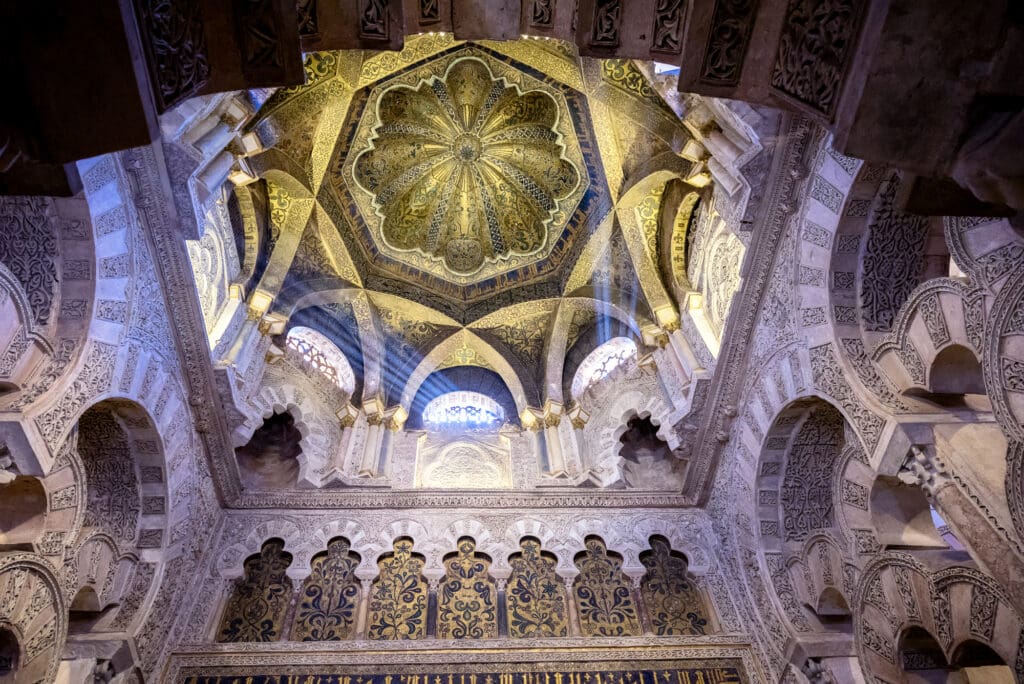
Islamic architects redefined structural possibilities with the extensive use of domes and arches. These elegant forms were not only visually stunning but also illustrated the era’s advanced understanding of geometry and engineering. The introduction of squinches and muqarnas allowed domes to transition gracefully over square rooms, expanding interior spaces without the need for additional support. Domes like the ones crowning the Great Mosque of Córdoba and Isfahan’s Masjed-e Jāmé remain testaments to the architectural prowess of their builders.
Craftsmanship during this period thrived, as evidenced by intricately decorated vaulting and the harmonious integration of columns into grand structures. This craftsmanship extended beyond mere ornamentation, showcasing a profound comprehension of materials and their structural capabilities.
Innovative Urban Planning in Islamic Cities
In the realm of urban planning, Islamic cities were characterised by their logical yet artful layouts. Engineers and architects of the time employed sophisticated methods to ensure efficient water systems, market areas, and residential districts. The wisdom of these early urban planners is palpable in cities that remain active to this day.
By prioritising the needs of city dwellers, they created multifunctional spaces that facilitated both economic and social interactions. Examples of such planning can be observed in the historical quarters of cities like Fez, with its intricate networks of streets designed with both defence and community in mind.
Islamic architects and urban planners left behind a heritage rich in ingenuity. Their meticulous attention to geometry and form resonates through every dome and arch, while their foresight in city design provides a blueprint for community-centric urban spaces. We see their legacy as a canvas of artistic and engineering feats, a confluence of knowledge and form in stone and mortar.
The Influence of Religion and Culture on Islamic Architecture
Our exploration reveals how deeply religion and culture have informed every aspect of Islamic architectural design.
Religious Influences on Mosque Design
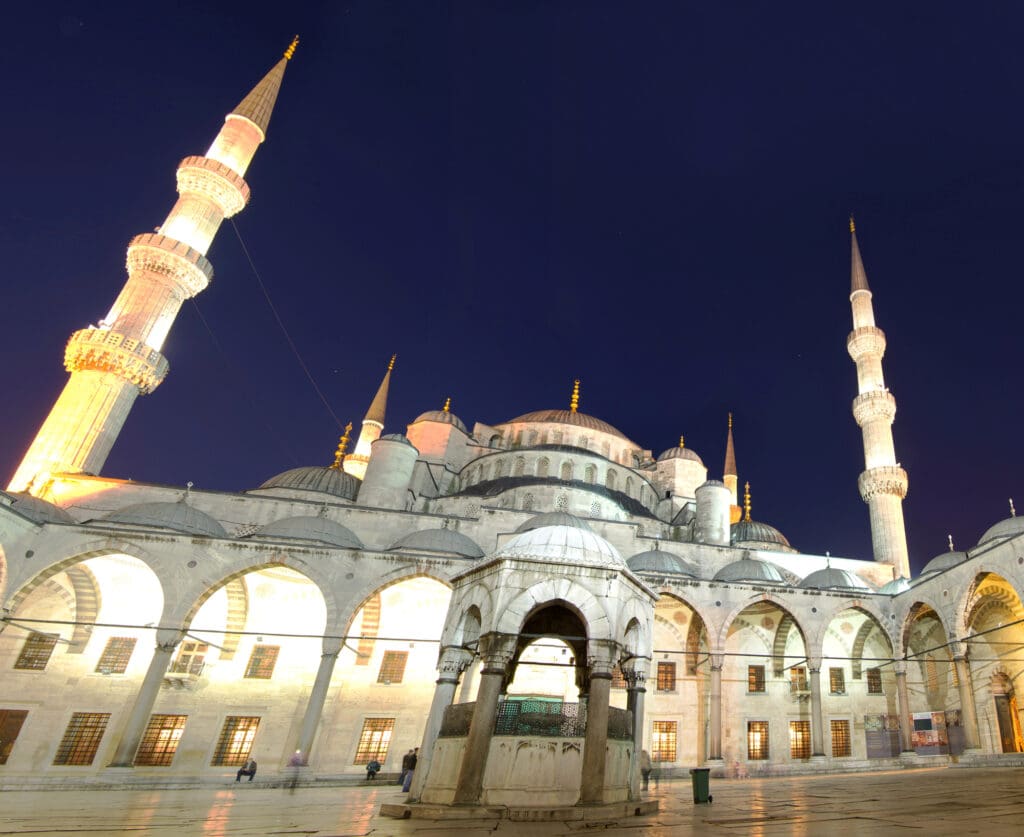
Mosques are quintessential to Islamic architecture, often serving as the heartbeat of the community. The mihrab, an intricate architectural element, signifies the direction of the Kaaba in Mecca, guiding the faithful in prayer. The layout of mosques typically includes courtyards, an area for communal gathering and ablution before entering the prayer hall. From the grandeur of the Alhambra in Spain to the majestic Imam Mosque in Isfahan, the geometric principles and organic motifs reflect a harmony between spiritual devotion and architectural elegance.
Cultural Significance of Palatial Complexes
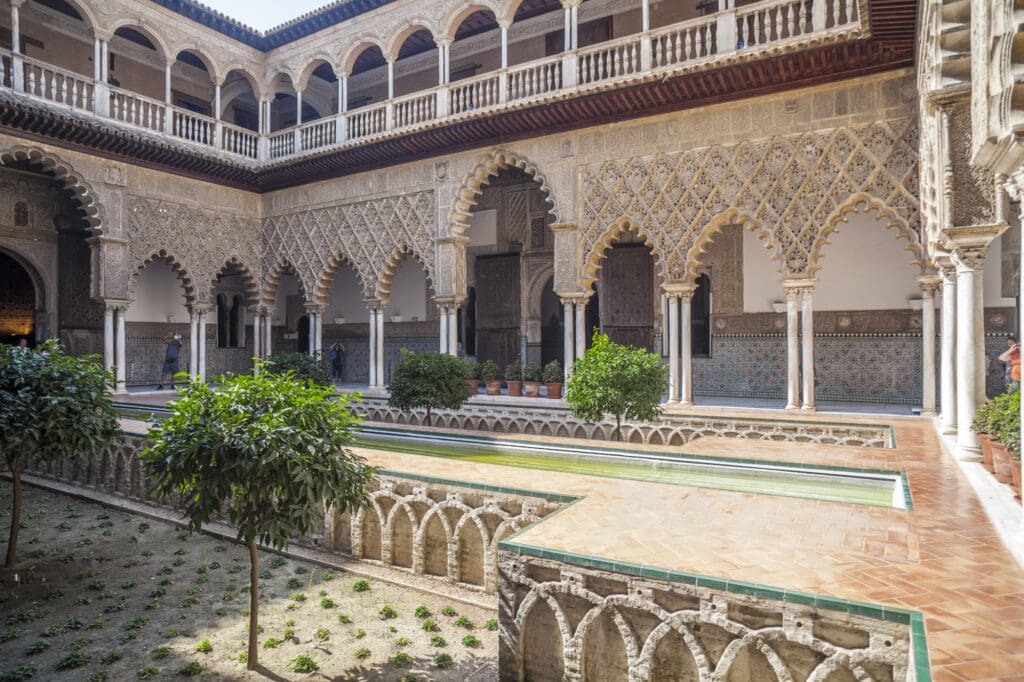
Palatial complexes in Islamic culture, like the Alcazar in Seville, encapsulate the cultural grandiosity of their period. They served not only as residences for rulers but also as spaces for administration and reception. Their design, often incorporating gardens and water features, symbolised paradise – a recurring motif in Islamic art and architecture. The use of calligraphy on walls and intricate tile work or zellige represents a blend of artistic expression and cultural identity, messaging the deep connection between the earthly domain and cosmological considerations.
Evolution of Islamic Architecture Over Centuries
Islamic architecture has seen significant transformations from its inception in the 7th century through the Islamic Golden Age, and onwards into the period of the Renaissance. Our journey takes us from the splendid Moorish designs of Spain to the intricate artistry showcased in Iran.
Transition from Moorish to Renaissance Influence
As we explore the evolution of Islamic architecture, we observe the enduring legacy of the Moors during the Middle Ages in Spain. The Nasrid dynasty, in their zenith, crafted the breathtaking Alhambra, a pinnacle of Moorish work, with its elaborate arabesques and refined stucco work. This architectural treasure in Granada stands as a testament to Islamic artistry in the West.
The Reconquista, a pivotal period in Spanish history, marks a gradual transition from Islamic to Christian rule, which also precipitated shifts in architectural styles. As the Renaissance took hold in Europe, these changes were evident in the incorporation of Islamic architectural features into Renaissance works. This amalgamation can be seen in Renaissance buildings that bore unmistakable Moorish influences, a testament to a confluence of cultures over several centuries. The interplay of Islamic motifs and Renaissance aesthetics characterises a unique chapter in the history of architecture.
Islamic Architectural Marvels Beyond the Alhambra
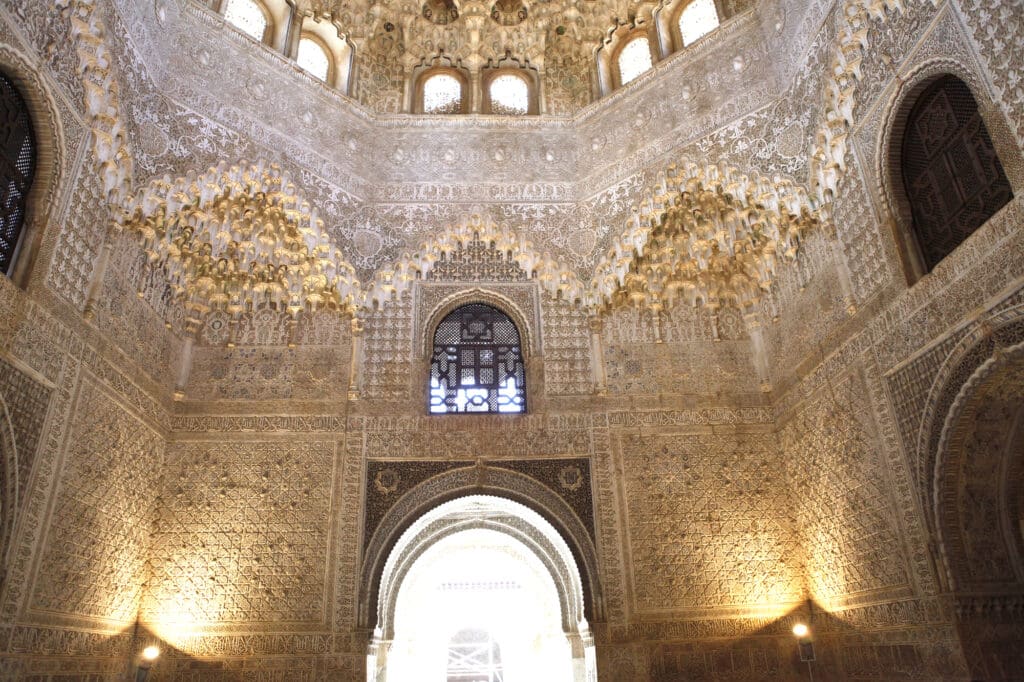
While the Alhambra stands as a profound symbol of Islamic architecture in Spain, many more sites showcase the ingenuity and artistry of Islamic craftsmanship. From the intricate designs of Seville’s monuments to the melting pot of styles in Istanbul, these marvels are a testament to a rich cultural legacy.
From Seville to Cordoba
In Seville, the Giralda Tower of the Seville Cathedral soars gracefully towards the heavens. Its origin as a minaret during the Almohad dynasty displays the uniqueness of Moorish architecture. The merging of cultures is equally profound in the Alcazar of Seville, with its Nasrid palaces evoking a similar aesthetic energy to that of the Alhambra’s palaces. Its courtyards and halls are a canvas that captures the essence of Islamic artistry amidst Gothic and Renaissance influences.
Continuing to Cordoba, the Great Mosque of Cordoba, a UNESCO World Heritage Site, is remarkable for its arches and columns that create a forest-like hall of worship. The harmonious blend of Umayyad style and later Christian additions makes it a monument that transcends religions, an architectural narrative in stone and tile.
The Cultural Fusion in Istanbul’s Architecture
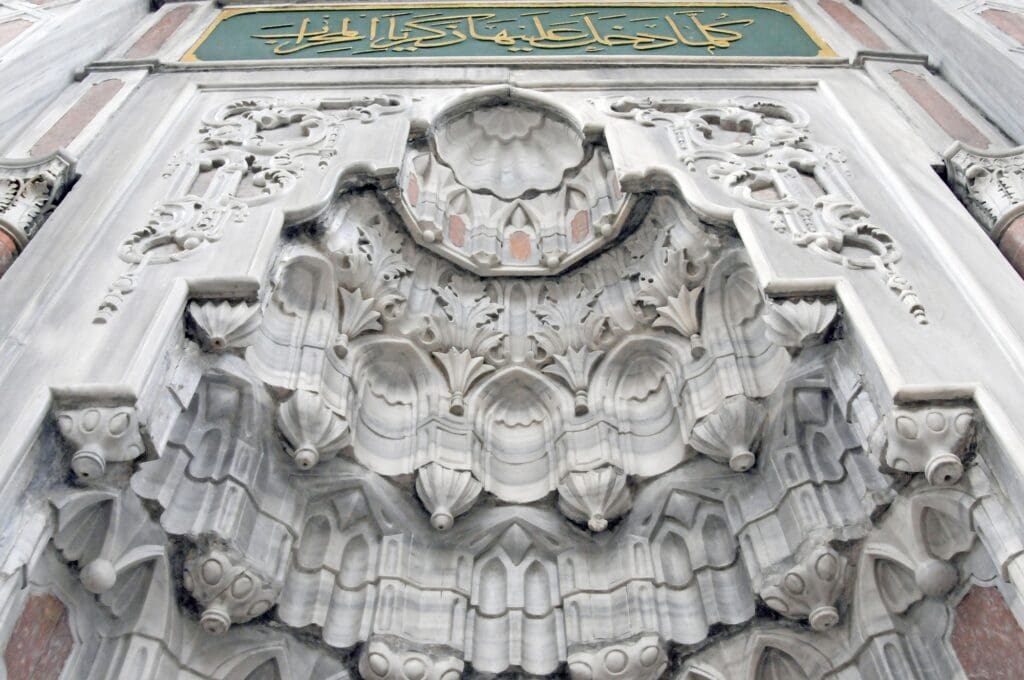
Our gaze shifts east towards Istanbul, where the cultural tapestry is rich with Islamic elements intertwined with Christian and Byzantine influences. The Süleymaniye Mosque, commissioned by Sultan Süleyman the Magnificent, is an iconic ensemble of domes and semi-domes. Its architect, Mimar Sinan, left a lasting legacy not only in Istanbul but also in the narrative of the world’s great architects. The Blue Mosque, with its cascading domes and six elegant minarets, is a visual symphony that encapsulates the zenith of Ottoman architecture, inviting admiration from both worshippers and design aficionados.
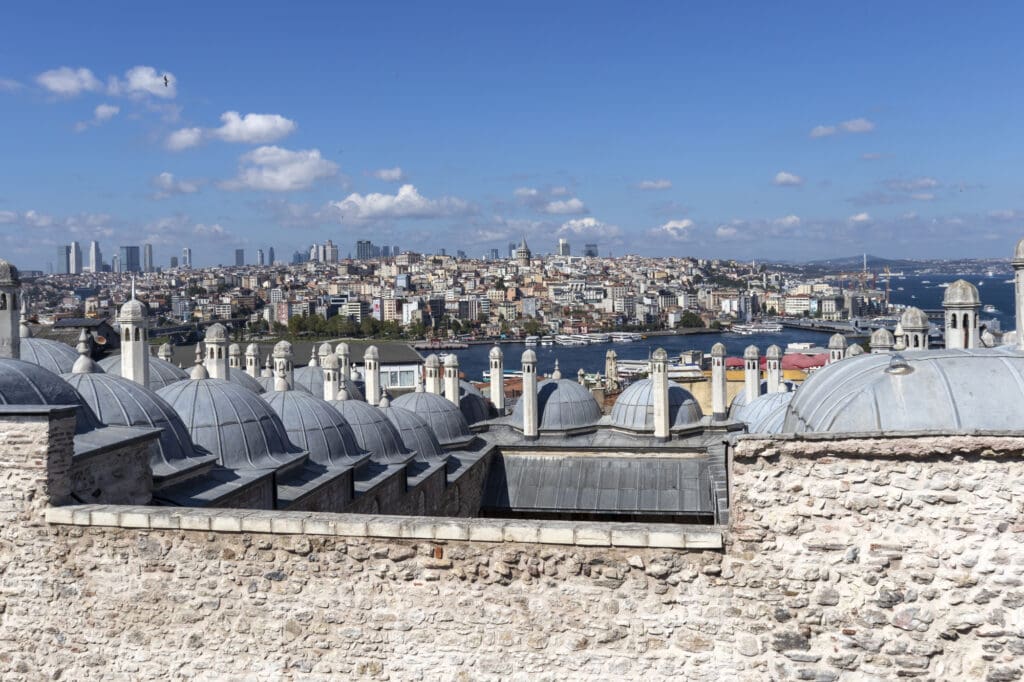
These sites collectively capture a period in history where Islamic architecture did not solely flourish within its heartlands but also blossomed vividly where cultures met and mingled, contributing lasting monuments to our shared cultural heritage.
Islamic Golden Age’s Legacy in Modern Architecture
The enduring influence of the Islamic Golden Age is vividly reflected in today’s architectural landscapes, from the intricate geometric patterns to the sweeping curves that are reminiscent of this illustrious era.
Influence on Modern Spanish and World Architecture
The Islamic Golden Age has left an indelible mark on modern Spanish architecture, particularly visible in the works of the visionary architect Antoni Gaudí. His masterpieces, primarily in Barcelona, exhibit the fusion of Islamic heritage with innovative designs. Gaudí took significant inspiration from Islamic art, evident in his use of geometric shapes and patterns that bear a similarity to the mosaics and tilework common in Islamic architecture.
For instance, one can see the intricate interplay of light and shadow, complex tiling, and fluidity of form in Gaudí’s Casa Batlló and La Sagrada Familia. These features trace their roots back to the critical advances in architecture during the Islamic Golden Age. It was a time when mathematics, science, and an emphasis on aesthetics combined to produce structures of extraordinary sophistication.
In broader terms, modern architecture across the world has also assimilated key lessons from the Golden Age. The use of courtyards, for spatial division and providing natural light, as well as the emphasis on water features for both aesthetic and cooling purposes, can often be traced back to Islamic influences.
Additionally, elements such as horseshoe arches and domes that were predominant in structures dating back to the Golden Age can be identified in numerous modern buildings, suggesting a timeless appeal and enduring legacy. This demonstrates how age-old Islamic architecture continues to inform and enrich contemporary architectural practices globally.
The Preservation and Restoration of Islamic Historic Sites
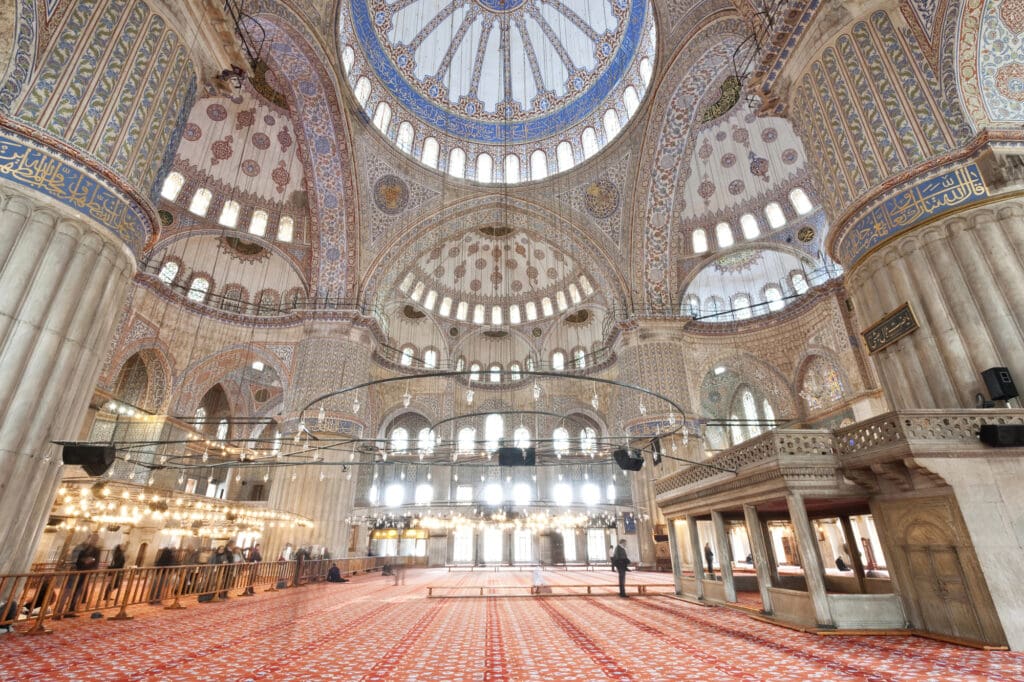
In our exploration of the architectural marvels of the Islamic Golden Age, we place great emphasis on the vital efforts to preserve and restore these historical sites. These efforts ensure that future generations can experience the grandeur and artistry of these cultural treasures.
UNESCO Efforts and Restoration Challenges
UNESCO World Heritage Sites are often centrepieces in the conservation of Islamic architectural heritage. These sites receive international attention and support, assisting in the preservation and restoration processes. For instance, the Alhambra in Granada is a prime example of how dedicated UNESCO efforts can aid in maintaining the splendour of Islamic historical sites. However, challenges such as funding limitations, environmental impacts, and the need for expert craftsmanship make restoration a delicate and sometimes difficult undertaking.
Tourism and Its Impact on Conservation
Tourism, while beneficial for local economies and global appreciation of Islamic history, can also pose a threat to the integrity of these ancient sites. The balance between welcoming visitors and preserving the delicate structures is crucial. Sustainable tourism, which respects and seeks to preserve the uniqueness of each destination, is key. In Granada, careful management of visitor numbers and the promotion of conservation initiatives help to ensure that historical sites such as the Alhambra can be enjoyed without compromising their preservation.
Conclusion: Reflecting on the Beauty and Grandeur of Islamic Architectural Heritage
As we come to the end of our journey, we must acknowledge the sweeping beauty and sheer grandeur that the Islamic Golden Age has bequeathed to our world. Islamic architecture is not just a testament to the civilisation’s technical prowess but also a reflection of its rich cultural heritage. The use of ornate geometrical patterns, intricate calligraphy, and symmetrical layouts transcends mere construction—they embody a collective identity and the ethos of an era.
Throughout the expanse, from the coiled streets of Spain to the stately mosques of Iran, we find monuments that still narrate stories of the past. They are repositories of history that continue to dazzle onlookers, much like the Islamic architects hoped they would. The allure of the Alhambra’s courtyards, the enduring legacy of the majestic Alhambra in Spain, and the sophistication evident in the vast domes and minarets of the Shah Mosque are everlasting tributes to the Islamic Golden Age.
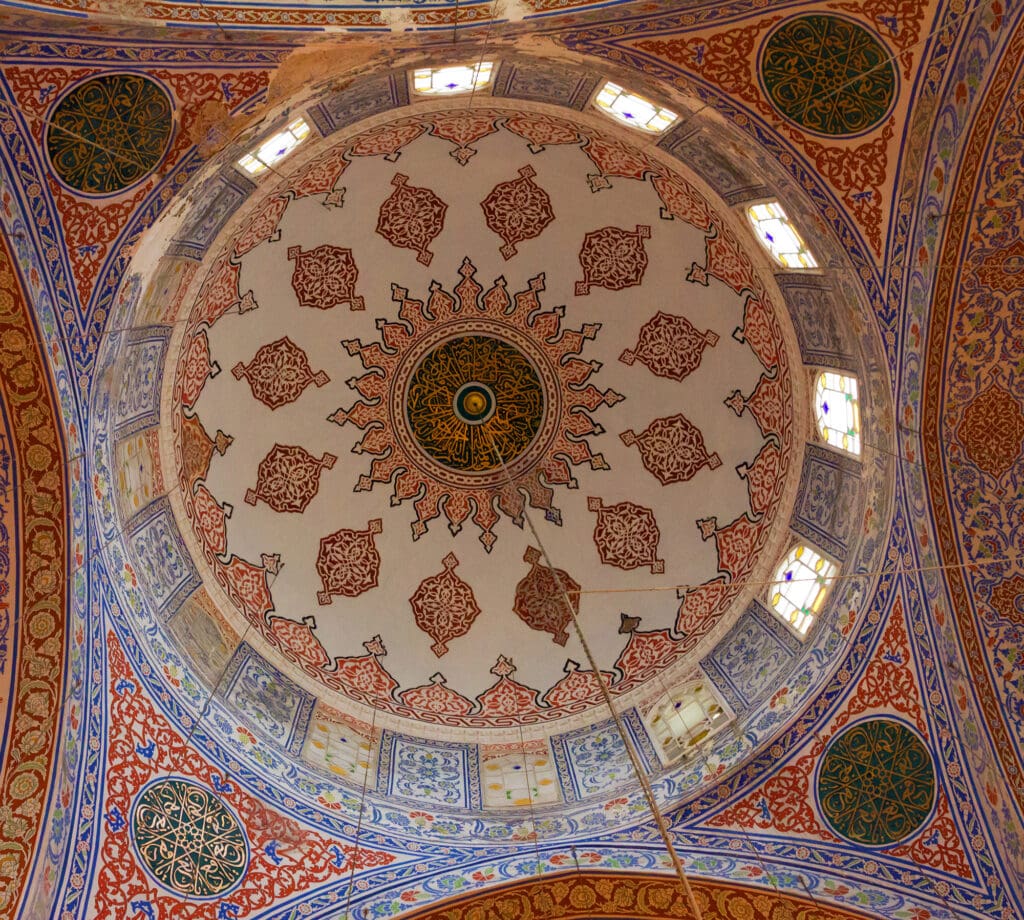
These structures carry with them an enduring cultural significance, binding generations to their roots while inspiring contemporary design. It is through our appreciation and preservation of this heritage that we remain connected to the larger human story—one of innovation, belief, and artistic expression.
As curators of this history, we are tasked with honouring and sustaining these architectural marvels. Our engagement with them allows us to step into a time where architecture was not just about structures but about crafting the very fabric of society itself. It is this reflection on both beauty and grandeur that leaves us enthralled by the Islamic architectural heritage and committed to its enduring legacy.
Frequently Asked Questions
In this section, we explore some of the most intriguing aspects of Islamic architecture during its Golden Age, focusing on its defining characteristics, celebrated achievements, and the profound cultural influences of this era, which stretched from Spain to Iran.
What are the defining characteristics of Islamic architecture during its Golden Age?
Islamic architecture in its Golden Age is distinguished by the extensive use of geometric patterns, intricate tile work, calligraphy, and a strong focus on symmetry and balance. Structures often included features like large domes, minarets, and courtyards, serving both aesthetic and functional purposes.
Can you list some notable achievements of the Islamic Golden Age pertaining to architecture?
One of the era’s most significant achievements was the complex use of muqarnas, an architectural ornamentation that creates a sensation of celestial infinity. Another was the development of advanced structural engineering that allowed for soaring spans and impressive domes, as well as the incorporation of sophisticated water systems into architectural designs.
What are exemplary buildings from the Islamic Golden Age, and where can they be found?
Exemplary buildings from the Islamic Golden Age include the grand Alhambra in Spain, which showcases detailed Islamic motifs and reflects the rich heritage of al-Andalus. Another is the Great Mosque of Córdoba, which is noted for its striking arches and spacious hall. Further east, the Masjid-i Jahan-Numa (Jama Masjid) in Delhi stands as a testament to the architectural grandeur attainable at the time.
How did the architecture of the Islamic Golden Age reflect the cultural and philosophical advancements of the period?
During the Islamic Golden Age, architecture mirrored the period’s intellectual achievements by embodying values like the pursuit of knowledge and harmony. This is evident in the design of madrasas, which were not only places of worship but also of learning, encouraging the dissemination of knowledge across various disciplines.
In what ways did the Golden Age of Islam influence Spanish architectural developments?
The Islamic Golden Age left a lasting impact on Spanish architecture, particularly in regions of al-Andalus, where intercultural interactions between Muslims, Christians, and Jews gave rise to the Mudéjar style. This influence is visible in the syncretic use of horseshoe arches, domed ceilings, and ornamental tilework present throughout Spanish historical buildings.
What is the timeline for the main architectural developments that took place during the Islamic Golden Age?
The timeline of main architectural developments spans from the early 8th century with the establishment of Umayyad rule, marking the beginning of grand Islamic architecture through to the end of the 15th century. Key periods include the rise of the Abbasid Caliphate, responsible for the construction of Baghdad, and the heyday of Moorish rule in Spain, which produced notable structures like the Alhambra and the Great Mosque of Córdoba.






